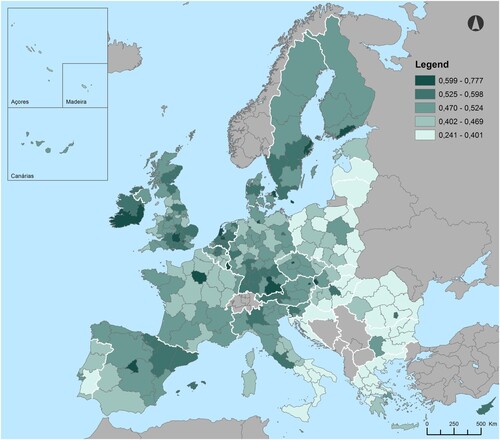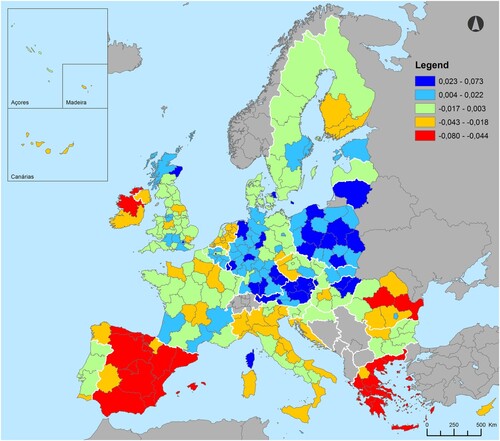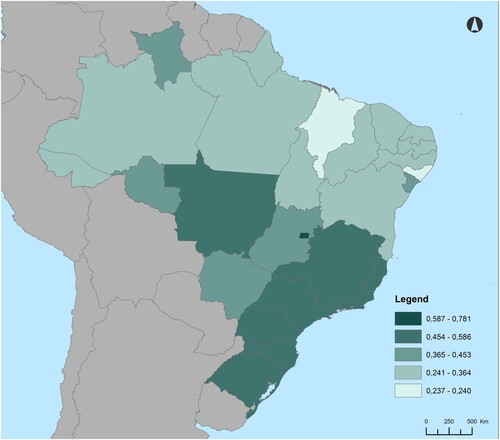Figures & data
Table 1. EU RDI between 2002 and 2014.
Figure 1. Regional development index (RDI) in the EU in 2008.
Source: Eurostat; authors’ calculations.

Figure 2. RDI change in the EU, 2008–2014.
Source: Eurostat; authors’ calculations.

Table 2. Brazil RDI between 2002 and 2014.
Figure 3. Regional development index (RDI) in Brazil in 2008.
Source: IBGE, RAIS and Ipeadata; authors’ calculations.

Figure 4. RDI change in Brazil, 2008–2014.
Source: IBGE, RAIS and Ipeadata; authors’ calculations.

